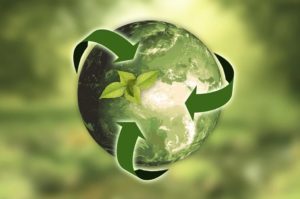According to estimates, each of us produces about one and a half kilos of waste every day. We can easily understand that there are mountains of waste coming out of our homes that risk to suffocate our environment if they cannot be disposed of properly.
 The Ronchi Decree in 1997 had the merit of introducing, for the first time in Italy, the theme of sustainable waste management, a law that has gone down in history as THE RULE OF THE 5 “R”, essential for understanding the importance of living with zero waste. The rule is based on 5 actions: Reduce, Reuse, Recycle, Collect and Recover.
The Ronchi Decree in 1997 had the merit of introducing, for the first time in Italy, the theme of sustainable waste management, a law that has gone down in history as THE RULE OF THE 5 “R”, essential for understanding the importance of living with zero waste. The rule is based on 5 actions: Reduce, Reuse, Recycle, Collect and Recover.
These actions should be a mantra in our homes, offices, classrooms… and be the fulcrum of our daily life and policies oriented towards environmental sustainability.
- REDUCTION = use of fewer resources
It consists in the concrete reduction of the origin of waste through the adoption of appropriate behavioural guidelines to follow. At the individual citizen level, during the purchase I can choose products with reduced and / or reusable packaging. Small tricks that have a considerable weight on a large scale.
- REUSE = recover and reuse products when they have not yet become waste
The reuse of an asset implies an immediate action to restore the function of the object, to prevent it from becoming garbage. In more general terms it can be considered a lifestyle, a mental and cultural attitude that takes shape in daily life through small gestures of attention. All these small gestures are transformed into a real economic activity that aims to relocate and reinvent products that are still reusable.
- RECYCLING = transforming, through industrial processes, a waste material into a new raw material to be reintroduced into the production cycle
Recycling is essential for:
- reduce the amount of waste and resources lost in landfills or incinerated;
- save energy needed to create new products from raw materials;
- reduce greenhouse gas emissions (pollution), the cause of global climate change;
- help support the environment for future generations.
For recycling to take place, however, it is essential that the separate waste collection system is rigorous, shared and efficient. We all have to do our bit!
- COLLECTION = waste separation
The undisputed protagonist of this action is the citizen through the right conferment in the appropriate binders according to what is prepared by the local administrations. The goal is to reduce the final volume of waste destined for landfills and to save raw materials and energy.
- RECOVERY = energy recovery
Most of the non-reusable or recyclable waste materials can be incinerated and transformed into thermal or electrical energy through waste-to-energy plants, alternative places to landfills.
Activating a lifestyle based on THE 5 “R” RULE and on a CIRCULAR ECONOMY, strongly opposed to the throwaway culture, is not simple, but certainly urgent and necessary!
If your company is interested in solutions for the treatment of waste materials, discover the CAMEC machines and systems ideal for the volumetric reduction of materials, in shredding processes (paper, wood, plastic, rubber, packaging, toner, etc.) and in the recycling sector (private and public recycling plants).
For more information contact CAMEC on 049 552115 and visit our website www.camec.net

